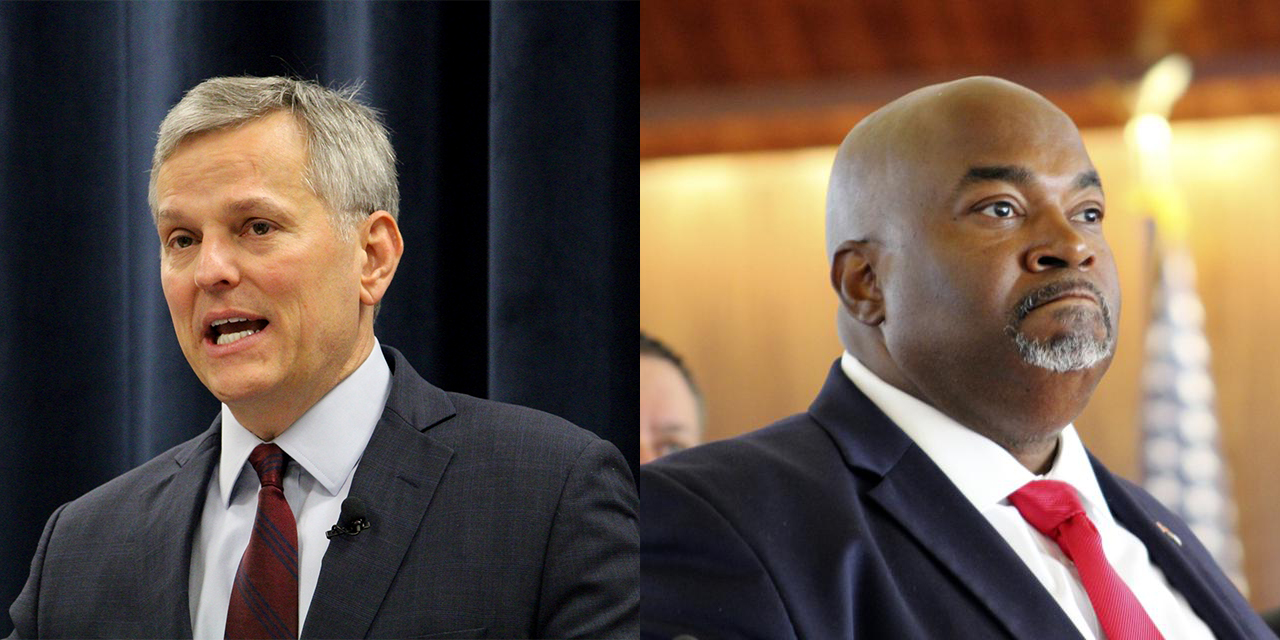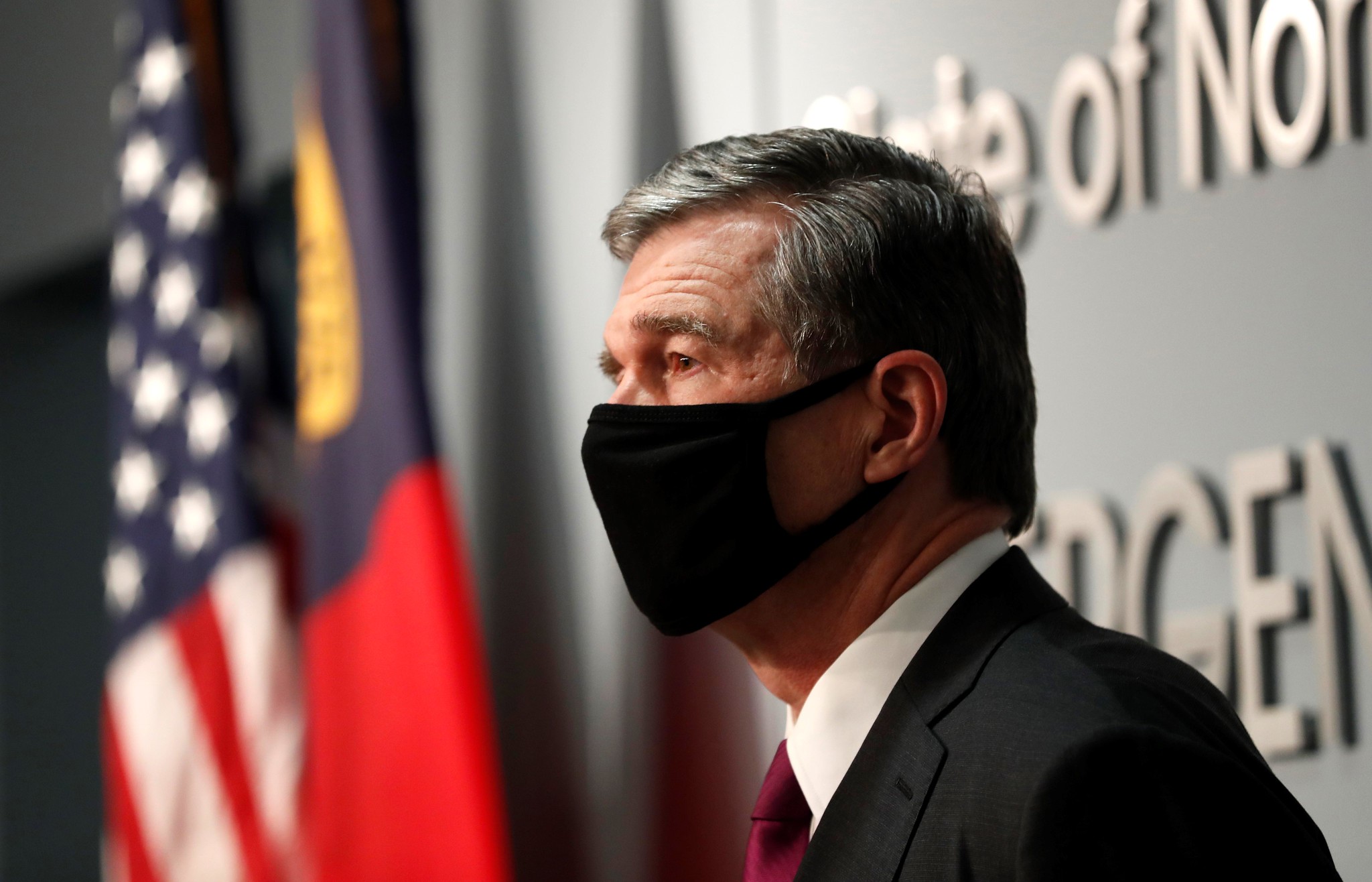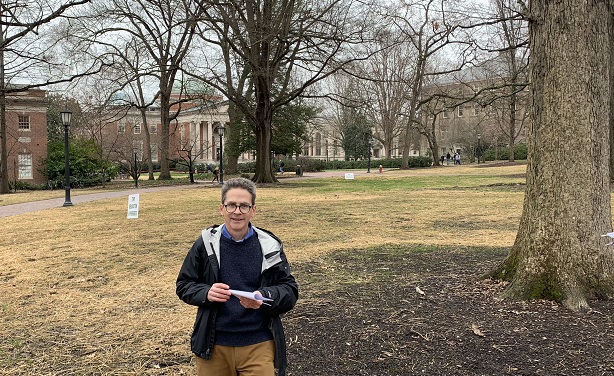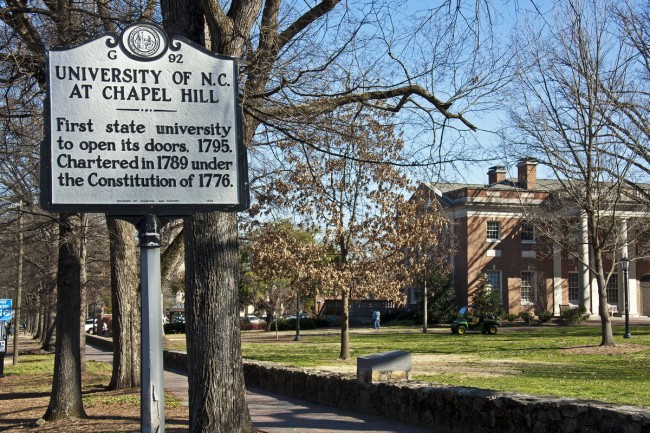Tensions have been high on the UNC campus in recent months over issues including race on campus and the recent selection of Margaret Spellings as UNC System President.
But March of 2016 marks 50 years since another set of protests took over Chapel Hill to oppose the Speaker Ban law on university campuses across the state.
Jock Lauterer is now a senior professor in the School of Media and Journalism at UNC. But 50 years ago he was a young photographer who captured two of the most iconic images of the Speaker Ban protests.
“In Chapel Hill in the ‘60s, it really just felt like folks were in the streets all the time,” Lauterer says before admitting, “and there were times when I, too, would put down a camera and pick up a sign.
“Which was a complete conflict of interest, but that’s just the way I was raised by a wonderful ole Civil Rights protester.”
Lauterer remembers the time leading up to the Speaker Ban protests on campus as “a great period to grow up as a young journalist because there was stuff happening all the time.”
Lauterer says he was “just a lucky kid” to end up with two of the most iconic photos from the protests at McCorkle Place on the UNC campus. Lauterer says he was looking out of the window of his apartment on the corner of Henderson and Franklin Street when he saw a large crowd gathering near the stone wall along Franklin Street that borders the UNC campus.

Frank Wilkinson at UNC. Photo via Jock Lauterer.
“I hustled out down the stairs and across Franklin Street and looked around,” Lauterer recalls. “And I saw where, there’s Paul Dickson – the Student Body President, and he’s the man who helped engineer the protest. And then here is this wall separating the campus from the town, and it said ‘Governor Dan Moore’s Wall,” the governor at the time.
“And, of course, that was an homage, in a way, and a reference – not too veiled – to the Berlin Wall, which, of course, to us at the time meant this barrier between black and white, good and evil, practically.”
Frank Wilkinson, who Lauterer describes as a “first amendment activist, not so much a communist,” was speaking that day in 1966, and Lauterer knew he needed to find the “sweet spot” to capture “this, sort of, little opera unfolding before me, in front of my lens.”
The self-described “old tree climber from way back” Lauterer scrambled up a nearby tree to find the perch to get the image he was looking for.
Lauterer says he did not anticipate as he took that photo with his World War II-era camera, which he lovingly describes as the “biggest, clunkiest, impossible camera to use for news,” that it would live on for 50 years. [Yes, he still has the camera]
Lauterer says does recall thinking, “Whoa, this is a moment,” as he hit the shutter release a few days later on March 9, 1966, in front of Silent Sam on the UNC campus.

Herebert Aptheker in front of Silent Sam. Photo via Jock Lauterer.
That moment was when activist speaker Herbert Aptheker was being told by Chief of Police Arthur Beaumont to “get off the campus,” Lauterer remembers.
Lauterer now leads his classes of photography students through the campus, photographing events including the Margaret Spellings protest and the Black Lives Matter protest on University Day, teaching the next generation of photojournalists.
Lauterer says, while his students “shoot the lights out of what I was doing at their age,” there are still lessons to be taught.
He says he had to talk with one student after the Spellings protest because the student was clapping along with what the speakers were saying, and that he “had to have a word with her,” – which he says he did with a laugh as he remembered the times he traded his camera for a sign.
“Yeah, I almost got fired for doing that.”

Views of the marker commerating the overturning of the speaker ban at the University of North Carolina at Chapel Hill. In background is McCorkle Place, an academis quad on the campus. Photo via UNC.
Lauterer says, as 50 years have now gone by since those photos were taken, he recently gathered with Robert “Bubba” Dickson and a few others who worked to get a marker in place along the same stone wall honoring the Speaker Ban protests and reminiscing that, “a good thing happened here.”
Listen to Lauterer’s interview with WCHL’s Blake Hodge below:









